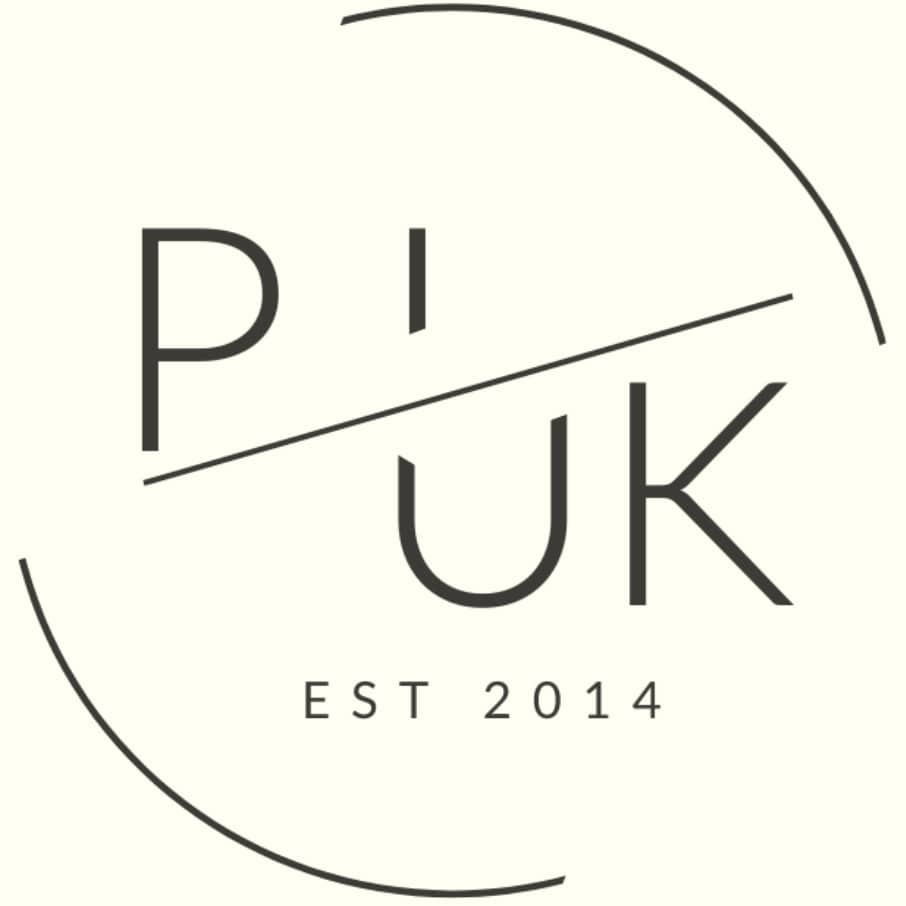Free Buy-to-Let Rental Yield Calculator: Instant results
Accurately calculating your buy-to-let rental yield, rental income and buy to let costs is a fundamental requirement for successful property investment.
Successful planning can directly impact your monthly cash flow and long-term returns. So, whether you have just started your property training and are looking for your first buy-to-let investment property, or you are an experienced landlord and looking for a simple way to calculate your current rental yield, below is your free rental yield calculator to see instant results along with a detailed FAQ.
Article updated: October 2025

-
by Robert Jones, Founder of Property Investments UK
With two decades in UK property, Rob has been investing in buy-to-let since 2005, and uses property data to develop tools for property market analysis.
Free Buy to Let Rental Yield Calculator
A quick and simple way to calculate your gross rental yield and importantly your net rental yield for any buy-to-let property:
Rental Yield Calculator
What Does Rental Yield Mean?
The meaning of rental yield refers to the annual return you receive from a rental property (like a buy-to-let) expressed as a percentage of the property's total cost.
It's calculated by dividing your annual rental income by the property value (then multiplying by a hundred).
This is your Gross Rental Income.
You can also calculate your Net Rental Income, which is the same calculation, but you also take out your annual buy-to-let running costs.
(note: Your property value could also including all your purchase costs like, purchase price, stamp duty, home survey fees and conveyancing fees).
Rental yield is the key metric used to measure a buy-to-let property's financial performance and is one of the key things investors look for on their property investment checklist when reviewing any new opportunity.
Simply, the meaning of rental yield is to show your annual rental income as a percentage of your property's total cost.
This rental yield calculation helps you quickly compare different properties on a level playing field. The rental yield calculation looks at your property investment returns in percentage terms.
Think of rental yield like a savings account interest rate. If you had £100,000 in a bank account earning 5% interest, you'd receive £5,000 in annual interest. Similarly, if you buy a property for £100,000 and receive £5,000 in annual rent, that would be a 5% gross rental yield.
There are two main types of buy-to-let rental yield. Gross rental yield vs Net rental yield.
Here is how to calculate them both:
Gross Rental Yield Calculation
This is your total annual rental income shown as a percentage of the property's purchase price.
For example, if you collect £750 per month in rent (£9,000 annually) on a property that cost £150,000, your gross rental yield would be 6%.
Gross Rental Yield Formula
The gross rental yield formula is straightforward:
Gross Rental Yield = (Annual Rental Income ÷ Property Value) × 100
Remember that your property value should include:
- Purchase price
- Stamp duty
- Legal fees
- Refurbishment costs
- Any other initial purchase costs
Net Rental Yield Calculation
This shows your actual return after deducting all running costs like:
- Mortgage payments
- Insurance costs
- Property maintenance
- Agent management fees
- Service charges and ground rent
- Maintenance funds for future repairs
Net yield gives you a more accurate picture of your true returns, helping you make better decisions and plan your cash flow more effectively.
For example, on the same buy to let investment property if you collect £750 per month in rent (£9,000 annually) on a property that cost £150,000, but you had running costs of an additional £200 per month for all the above items, your net rental yield would be 4.4%.
Net Rental Yield Formula
The net rental yield formula helps you understand your actual returns after all expenses:
Net Rental Yield = (Annual Rental Income - Annual Costs) ÷ Property Value × 100
This net yield gives you a more realistic picture of your actual returns compared to the gross yield calculated earlier. When comparing different investment opportunities, always try to calculate both yields to make truly informed decisions.

What is a Good Rental Yield?
So what does 'good' look like, and how do you beat 'average'?
Great Rental Yield Target
Achieving any of the following targets for your property investments is a great outcome and target
- Buy to let - 8%+ gross rental yield
- Student Let - 8%+ gross rental yield
- HMO - 15%+ gross rental yield
- Holiday let - 20%+ gross rental yield
Good Rental Yield Target
Achieving any of the following targets for your property investments is a 'good' target. These levels of rental yields are most typical in major Cities and Towns across the UK. Especially the larger locations like Manchester, Birmingham, Nottingham, Leeds and Bournemouth
- Buy to let - 6%+ gross rental yield
- Student Let - 6%+ gross rental yield
- HMO - 10%+ gross rental yield
- Holiday let - 15%+ gross rental yield
Understanding rental yield becomes even more important when you consider different real estate strategies.
There are many investors who focus on capital growth properties and will accept a lower-than-average rental yield.
But that is only possible if you have the cash flow to cover costs, or if you are buying cash and do not have to worry about mortgage finance.
For many buy-to-let landlords and property investment companies, their main criteria is achieving the highest rental yield.
So understanding the basics of rental market terminology like let agreed, helps investors know what rent is possible to actually achieve in any given area when they do their research.
Buy-to-Let
A standard buy-to-let property might earn a gross rental yield of 6% or higher, depending on the location (central London buy-to-let properties cost a lot more and would have a lower rental yield than other Cities). Yet there are many towns and cities currently providing much higher yields, as rental demand is so high that rental prices per month have been pushed up, improving yields.
For example, cities like Oldham and Newcastle have properties with gross yields at 7% and 8%+ if you know where to look and how to find the best off-market property opportunities.
Other major cities have lower yields due to the higher cost of purchasing a property. For example, Manchester's average rental yield is currently below 6% and London's rental yields are around 5%.
Purpose Built Student Accommodation (PBSA)
PBSA provide great rental yields as the asset cost is typically lower as they are smaller units. With high student demand, if the property is in a major city like Liverpool, Leeds or even Durham where rental demand is high, then these gross yields can be 8%+.
Student HMOs
Meanwhile, Student HMO investments (Houses in Multiple Occupation) can deliver more substantial gross yields of 12% or above. These properties do require more extensive management and are often higher value assets and may require specialist financing (which come with increased interest rates), so they are typically for the more experienced landlord.
Professional HMOs
Similar to students, professional HMOs (working tenants) are typically around the 12%+ gross rental yield mark. Remember though the price of the asset really matters here. A 7-bedroom house of multiple occupation is much more expensive to buy in London than it is in Lytham St Annes.
We have also created a free HMO specific rental yield calculator.
Holiday Lets
When investing in a holiday let, you may see gross rental yields as high as 20%+. Which sounds really impressive. Yet please remember they do have higher running costs, so more typically, around the 10% net rental yield level, which is very high compared to other rental strategies. These are more specialist and only work in some major cities, seaside and rural tourist locations. You can learn more about how and why to buy a holiday let here.
Why Rental Yield Matters?
Getting your rental yield calculations right is crucial when investing in property, as this one metric influences everything, including your monthly profits, cash flow and likely success to cover costs and grow.
Although it doesn't directly equate to cash flow, as this is more nuanced per property (and depends on many other aspects like financing, you can see how this can impact your property deals here with our loan-to-value calculator), knowing your rental yield will give you a guide on your property's potential.
For example, if your rental yield is too low, even a small increase in costs or mortgage rates could quickly turn a profitable property into a loss-making liability. Similarly, without adequate rental yield, you might struggle to cover essential property maintenance or build the cash reserves needed for future investments.
Think of rental yield as your property's financial health check - it tells you whether an investment is likely to be sustainable before you commit your money. Modern property tools can automate these calculations and provide additional UK property market data.
This becomes especially important when:
- Applying for buy-to-let mortgages or raising property finance
- Planning for future maintenance costs
- Comparing opportunities, like whether to buy in the cheapest area of Manchester or the cheapest area of Birmingham
Frequently Asked Questions About Rental Yield
How much profit do landlords make a month?
Monthly landlord profit varies significantly by location, property type, and financing structure. After deducting mortgage payments, insurance, maintenance, management fees, and service charges, landlords typically retain 30-50% of rental income as profit. For example, on a property generating £1,000 monthly rent, actual profit might be £300-500. However this is extremely variable. With high financing costs and low equity, for example if a landlord has a 80% loan to value mortgage, or higher, there profits will likely be lower. In some locations with lower asset prices and higher rental yields, like buy-to-let properties in Manchester, landlords can achieve higher than average monthly profits due to better yields (7-8%+) compared to Southern cities. HMO landlords can achieve £800-1,500+ monthly profit from a single property due to multiple rental streams, while holiday let investments may see £1,000-2,000+ during peak months but lower off-season returns.
How much profit do landlords make a year?
Annual landlord profit is simply monthly profit multiplied by 12. Using the example above: if monthly profit is £300-500, annual profit equals £3,600-6,000 (£300-500 × 12 months). However, this varies dramatically based on financing and location. Landlords with high loan-to-value mortgages (80%+) typically see lower annual profits due to higher interest payments. In contrast, properties in high-yield areas like Durham and Coventry with 6-7% net yields can generate £12,000-14,000 annual profit on a £200,000 property. HMO investments typically produce £9,600-18,000+ annually (£800-1,500 × 12) due to multiple rental incomes, while purpose-built student accommodation generates £8,000-12,000 per year. Remember to account for void periods, major repairs, and potential capital gains tax when calculating true annual returns.
Is 10% rental yield good?
Yes, 10% gross rental yield is excellent for UK property investment and significantly above the national average of 4-5%. This level of return typically indicates lower cost of houses to buy, coupled with a strong local rental market where demand means rents are affordable for tenants local incomes yet they are inline with areas where houses may cost more to buy. Properties achieving 10%+ yields are commonly found in HMO investments, where multiple tenants generate higher total rent. Some Northern cities like Oldham and Middlesbrough offer standard buy-to-let properties with 8-10% gross yields. However, always calculate net yield after all costs, as a 10% gross yield typically translates to 6-7% net yield, which still represents strong performance. When evaluating 10%+ yields, ensure the area has sustainable rental demand for the long term and isnt based on a short term strategy like a seasonal holiday let for 2 months of the year and check local property market data to see if it has the potential for capital growth if you wish to hold the asset for a long time.
What is the average rental profit on a property in the UK?
The average rental profit on a UK property varies significantly by region, with national net yields averaging 3-5%. In practical terms, a £200,000 property with 4% net yield generates £8,000 annual profit (£667 monthly). However, regional differences are substantial. London properties typically achieve 2-4% net yields due to high purchase prices, while Nottingham and Leeds deliver 5-7% net yields. This means a £150,000 property in Manchester might generate £10,500 annual profit compared to £6,000 from a £300,000 London property. Specialist strategies like student HMOs can achieve £12,000-20,000 annual profit per property due to higher yields of 10-15%.
Real estate yield calculator
A real estate yield calculator is an essential tool for UK property investors to evaluate potential returns before purchasing. Our free calculator above provides instant results for both gross and net rental yields, helping you compare opportunities across the best UK investment locations. Simply input your property value (including stamp duty and acquisition costs), monthly rent, and annual expenses to see accurate yield calculations. The calculator accounts for all major costs including mortgage payments, insurance, maintenance, and management fees. This tool is particularly valuable when comparing properties in different cities - for example, checking whether a cheap Manchester property offers better returns than a cheap Birmingham investment. For HMO calculations, use our specialised HMO yield calculator.
What is the rental yield formula?
Gross Rental Yield = (Annual Rental Income ÷ Property Value) × 100
Net Rental Yield = ((Annual Rental Income - Annual Costs) ÷ Property Value) × 100
For example: £9,600 annual rent ÷ £150,000 property value × 100 = 6.4% gross yield. Use our calculator above for instant results.
